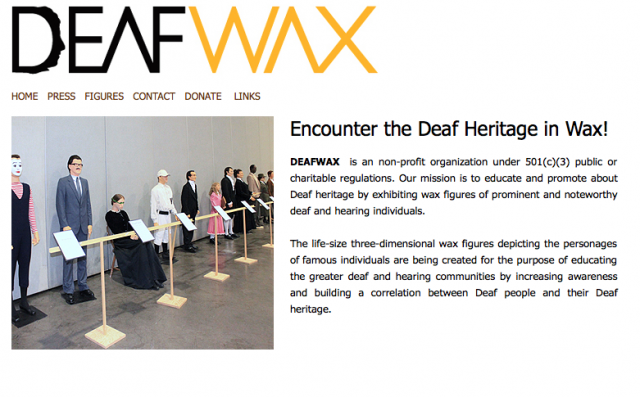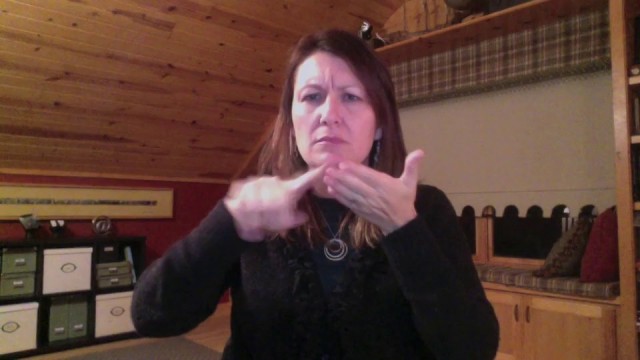Originally appeared in Silent News, July 2001.
In 1901, people had not yet experienced a World War; Titanic hadn’t sunk yet; TTYs and decoders were unheard of; and deaf people were routinely denied life insurance.
The National Fraternal Society for the Deaf (NFSD), one of the oldest deaf organizations active today, recently observed its 100th anniversary with a banquet and weekend of celebration in Elk Grove Village, Ill. On May 25, nearly 200 Fraters congregated for dinner and presentations. In attendance were many notable deaf individuals, including Dr. Frank B. Sullivan and Robert Anderson, former NFSD presidents; Al Pimentel, superintendent of the New York School for the Deaf in White Plains; and Billie Moehle, the first woman elected to the NFSD Board of Trustees.
Upon arrival at the hotel, Fraters were immediately greeted by a room full of exhibition displays, which included photographs from NFSD’s first year, various letters focusing on the peddling scandal of the 1940s, and many other amazingly preserved documents. Photos showed group after group gathering at picnics and events in cheerful spirits. In browsing the exhibits, it became apparent quickly that NFSD has had a rich history.
A quick history lesson
NFSD was formed in 1901 to provide life insurance to deaf people at low costs, in addition to offering socialization opportunities. A group of men at the Michigan School for the Deaf (MSD), who were influenced by a fraternal group during their high school days at MSD, a group known as the Coming Men of America (CMA), came together at an alumni picnic to discuss the feasibility of such a life insurance organization.
The Fraternal Society of the Deaf (FSD) was established in 1901, in Illinois since a majority of the men were employed in the Chicago area, on June 12. FSD became NFSD at the national convention held in Cincinnati, Ohio, in 1907. Today, NFSD has 68 divisions in the nation and is licensed to sell insurance in 36 states.
Historical book
Banquet attendees were given many goodies, including a ruler, cups, and a hand towel. But perhaps best of all, attendees were also given a commemorative book of NFSD’s grand history.
“I felt the best way to attract the attention of readers was to do a quarterly chronological history, with corresponding pictures, articles, poems, etc., for each page,” Editor Virginia Borggaard said. “Fortunately, there were several published articles written by Fraters – all accomplished writers – and convention proceedings that enabled me to put historical facts into perspective for each important year being covered.”
The book, filled with clear and crisp photographs, biographies, and a detailed chronological history, is a must-see for any person interested in the history of not only NFSD, but also of the deaf community. The efforts began three years ago, and interestingly enough the most difficult era to record wasn’t the early years.
“The hardest part was finding a complete written history on the period from 1952 to 2001, since there are no published papers covering this period of time as a whole, other than the every-four-years convention proceedings since 1952 and The Frat magazines,” noted Borggaard. Borggaard worked closely with Carol Van Nevel, the Society archivist, and Dr. Frank B. Sullivan, who offered feedback and proofreading skills.
Fraternalism
The spirit at the 100th anniversary banquet was very much filled with fraternalism. The night began with remarks from Grand President Al Van Nevel, who began his involvement with NFSD in 1964 as an accountant and became Grand Treasurer in 1967. The master of ceremonies for the evening was past NFSD Board Chairman Charles Giansanti. After an invocation given by Mary Anderson, wife of NFSD’s 11th Grand President Robert Anderson, Roberta Cordano of Minnesota treated the audience to a speech.
Cordano, a third-generation NFSD member, spoke about building community. Her grandfather, John Cordano, was extremely active with NFSD activities, and passed down that activism to her father, Waldo Cordano. “My father had a briefcase in his closet,” Cordano said. “Whenever we kids saw him take that briefcase out of his closet, we knew it was time for serious business, NFSD business.”
After Waldo passed away in 1994, his wife Jean was asked to fill his board position. Jean did so, serving for five years, then passed along the board position to one of her three daughters, Mary Cordano Dall of Indianapolis. Dall has a deaf son who is also a NFSD member – making him the fourth generation to be so.
This spirit of fraternalism was stressed by Cordano, who said, “When I was socializing with some of [the members] last night, one thing was common. Each member had stories after stories about their NFSD involvement, activities, and experiences. Stories that made me feel so much a part of the NFSD family.”
This feeling is found in many other members. Michael N. Ubowski of Phoenix, Ariz., who serves on the NFSD board of directors, says, “I am a diehard NFSD member and have been in my own way driving people to think one thing. When I was the Western Regional Field Manager of NFSD – and I still say the same thing today – I would always lecture to the people that once they join NFSD, it belongs to them, too…not ‘us’ or ‘them’ but us together – and that is what fraternalism is all about.” Ubowski also designed a commemorative poster tracing NFSD’s history.
After dinner, the opening of a 25-year-old time capsule was to be opened by Sullivan. The time capsule was buried at the former home office in Mount Prospect in what was claimed to be an airtight container. However, some of the NFSD officials decided to open the capsule a few days earlier to ensure that everything was of decent condition. That was when that they discovered the contents had been completely demolished by Mother Nature.
A few notable members were also recognized. Forrest Reid of Chicago was recognized as NFSD’s oldest member in attendance, at the age of 92. Henry Niemeyer was also recognized as the longest-serving member of NFSD in attendance, having been a member for 61 years.
Barry Strassler of Annapolis, Md., gave his speech next. He spoke of the past 100 years in historical terms, and stated that NFSD stood for nostalgia, force, seed, and destiny. The evening was capped off by a performance given by Charles N. Katz of California.
“The weekend succeeded in achieving our goal in recognizing those people who made NFSD what it is,” President Van Nevel said.
Norman Glazer, of Skokie, Ill., who attended the events with his wife Minnie said, “The exhibitions were especially interesting. The attendance numbers seemed to be pretty good, and I enjoyed the events thoroughly.”
Sullivan said, “Most noteworthy [of the evening] was the age of the attendees – mostly older people who stayed loyal to the NFSD through the years.”
So, what lies in the future for NFSD’s next 100 years? “I’d love to see a renewed interest in the history and solidarity of the NFSD, and a surge in new members,” said Borggaard, who was the first woman elected to NFSD’s board of directors and who continues to serve today. She added, “By 1945, the phenomenal growth of the NFSD to 10,000 men (no women were admitted until 1952), came by because members themselves brought in new members.”
Ubowski added, “NFSD is now working to explore what the public wants to ensure that we give them what they want, and at the same time, they can keep us together, moving into the next century at the satisfaction of both parties.”
The spirit of fraternalism has always been a priority in NFSD, and from the looks of things at the 100th anniversary banquet, it’s obvious that this spirit isn’t going to die anytime soon.
Copyrighted material. This article can not be copied, reproduced, redistributed without the written consent of the author.


